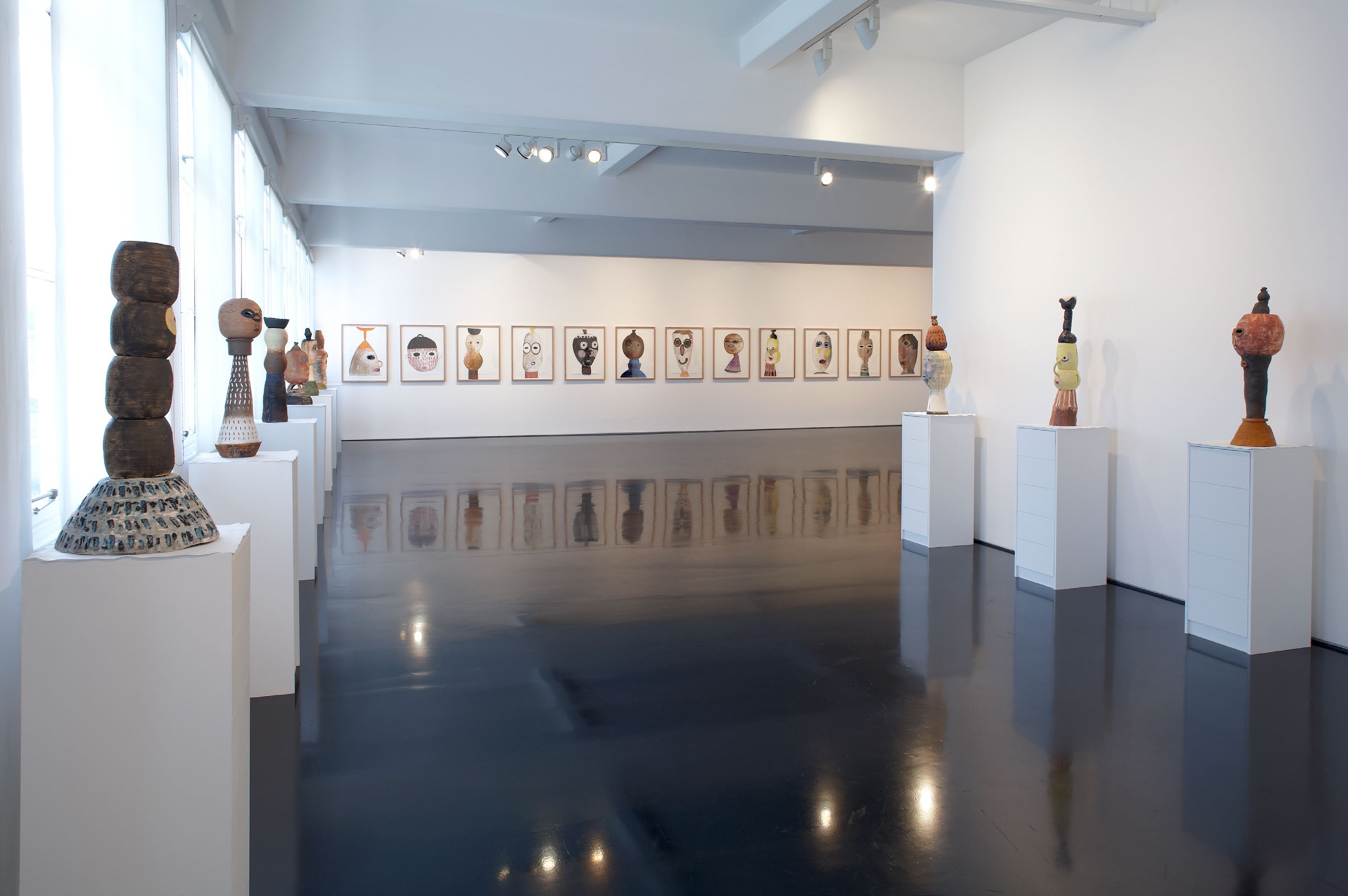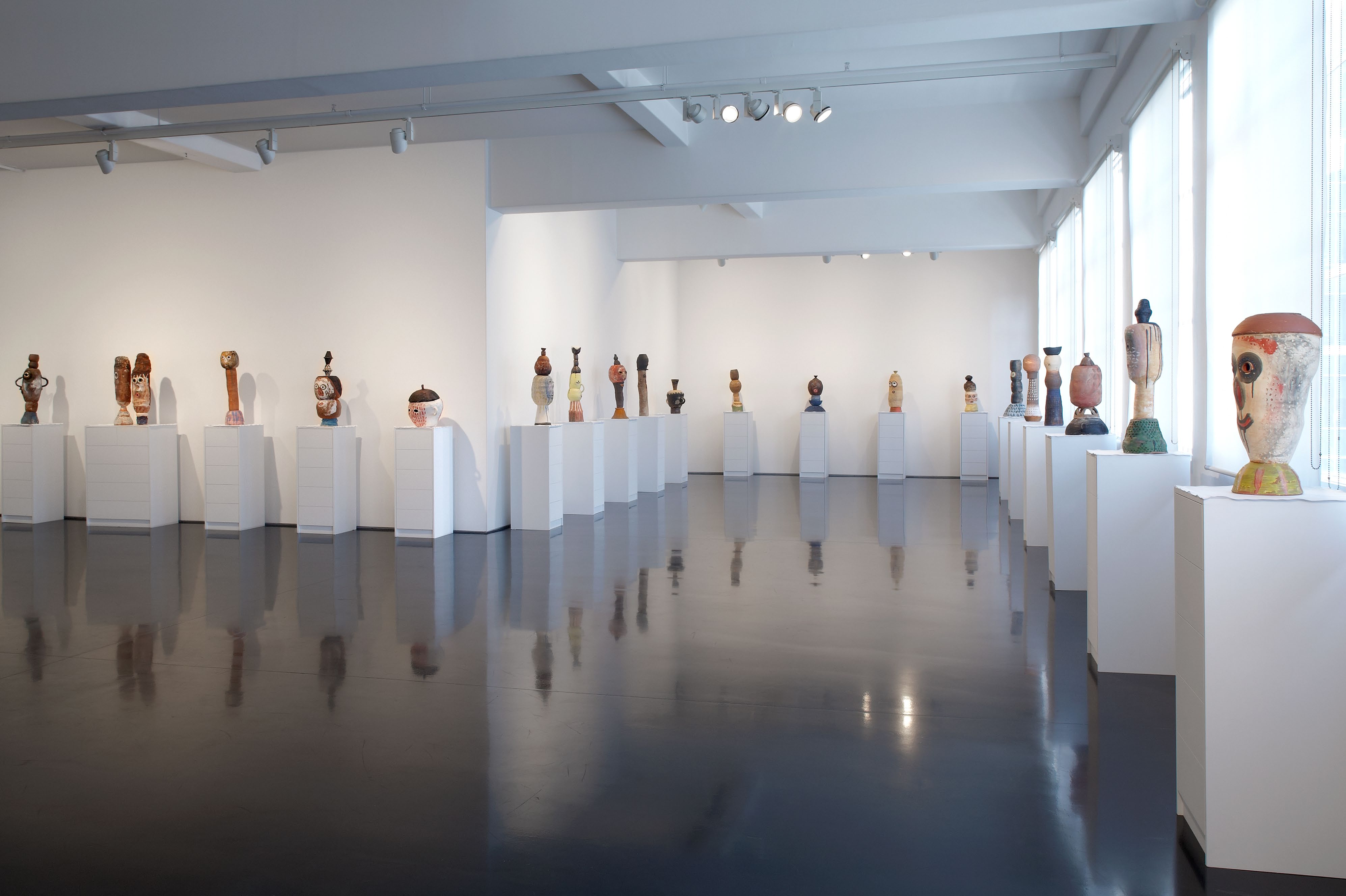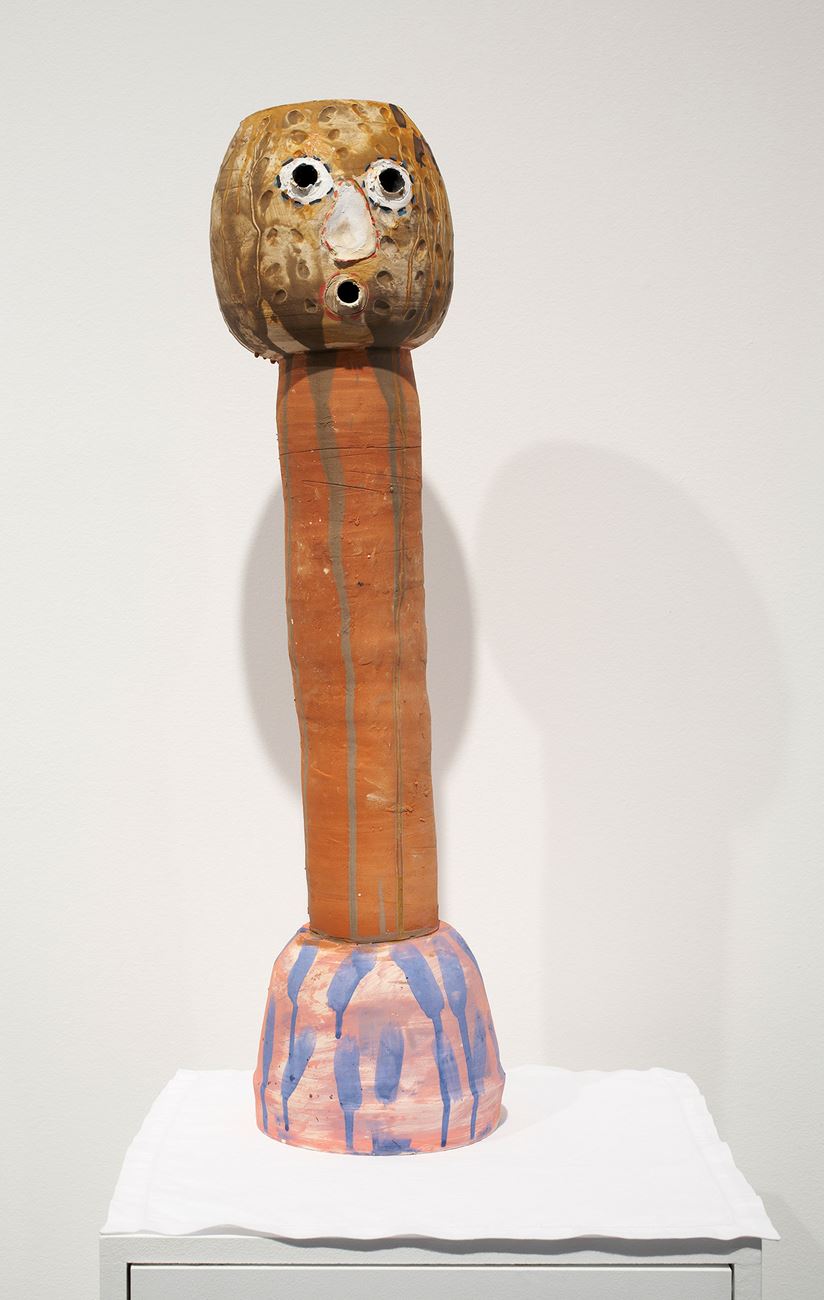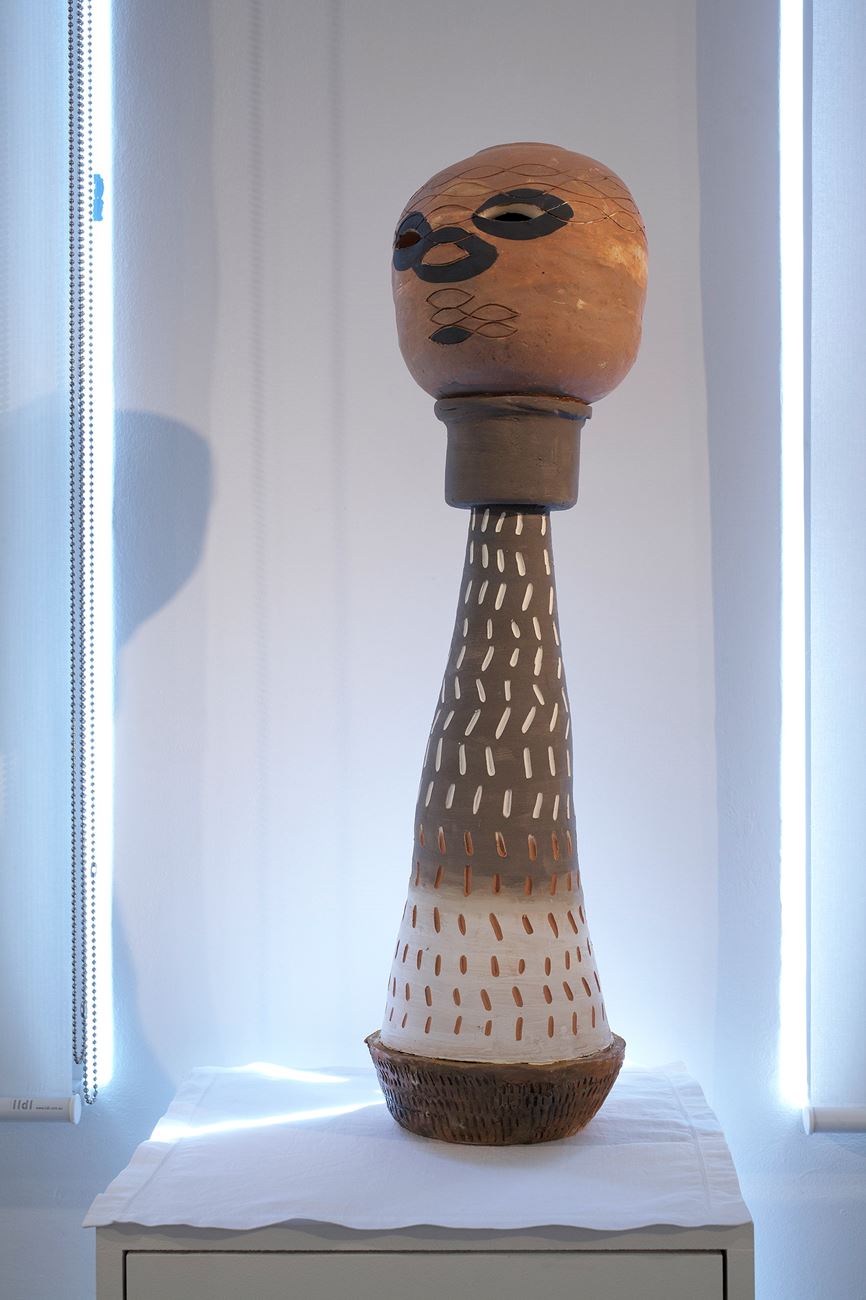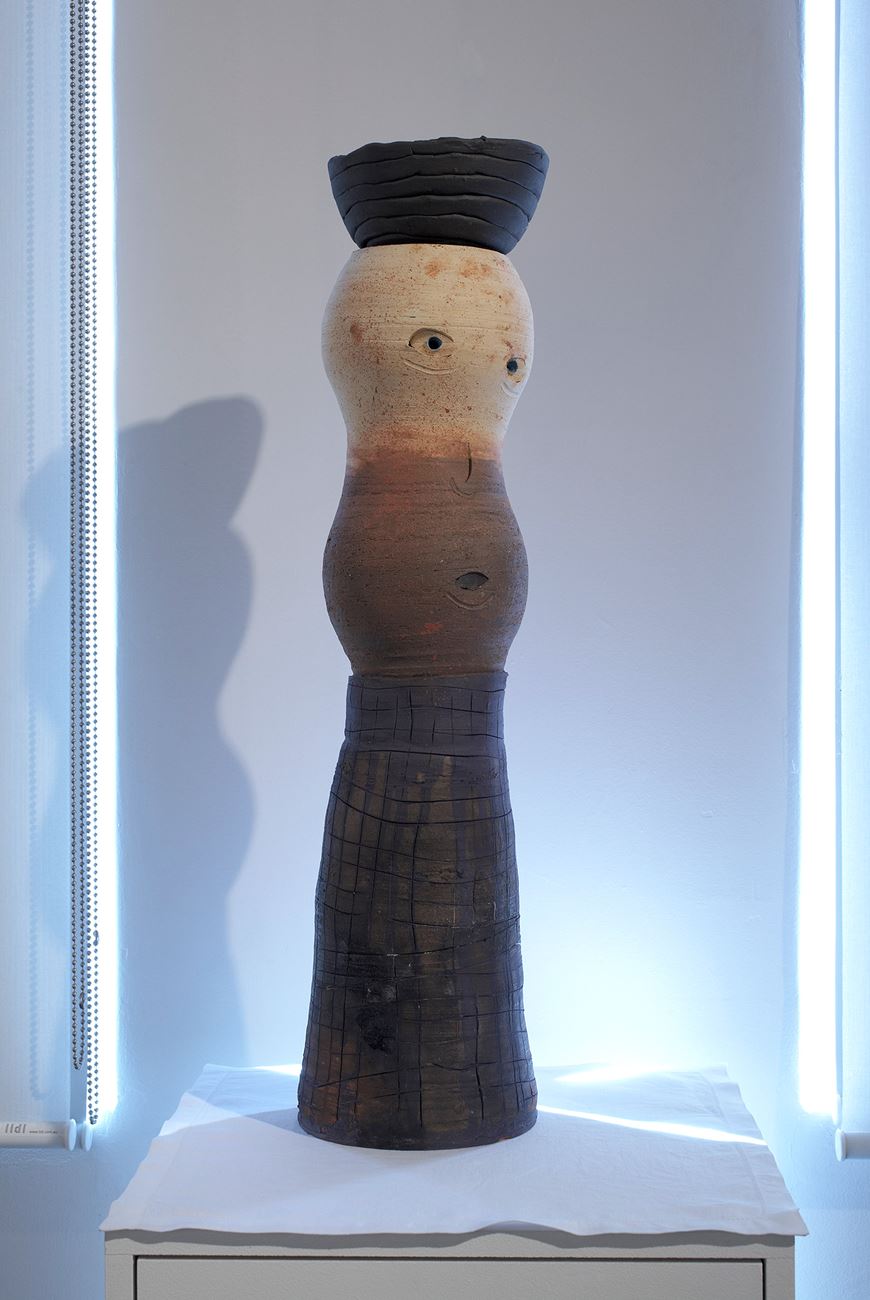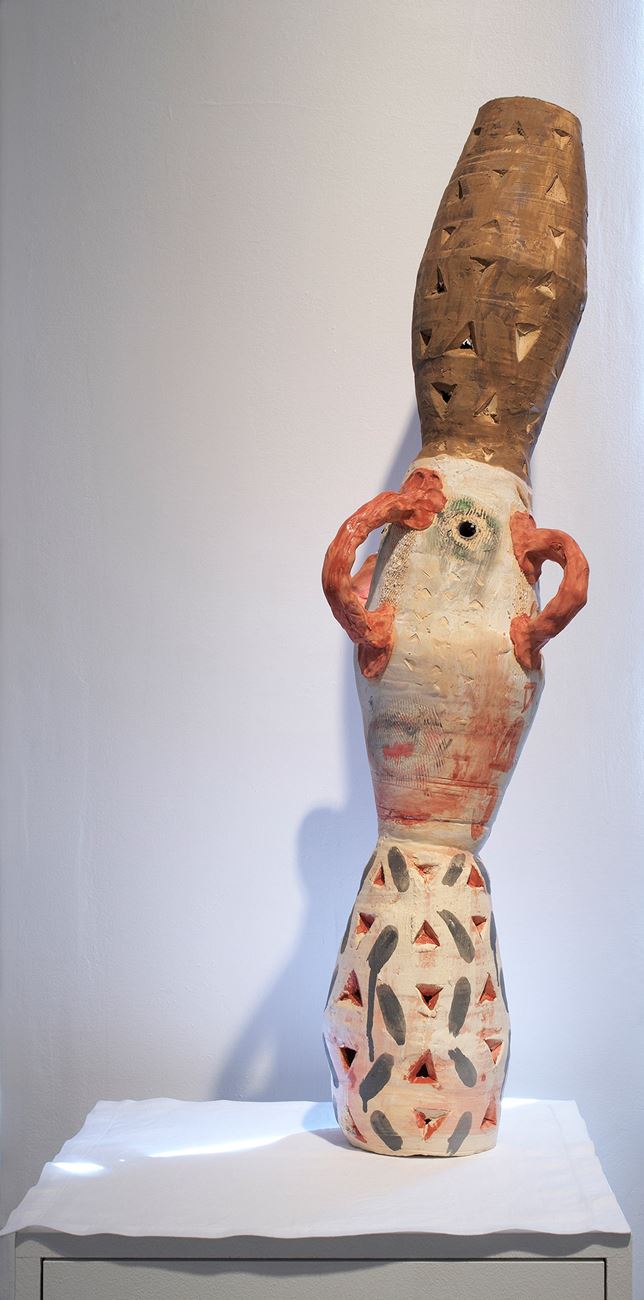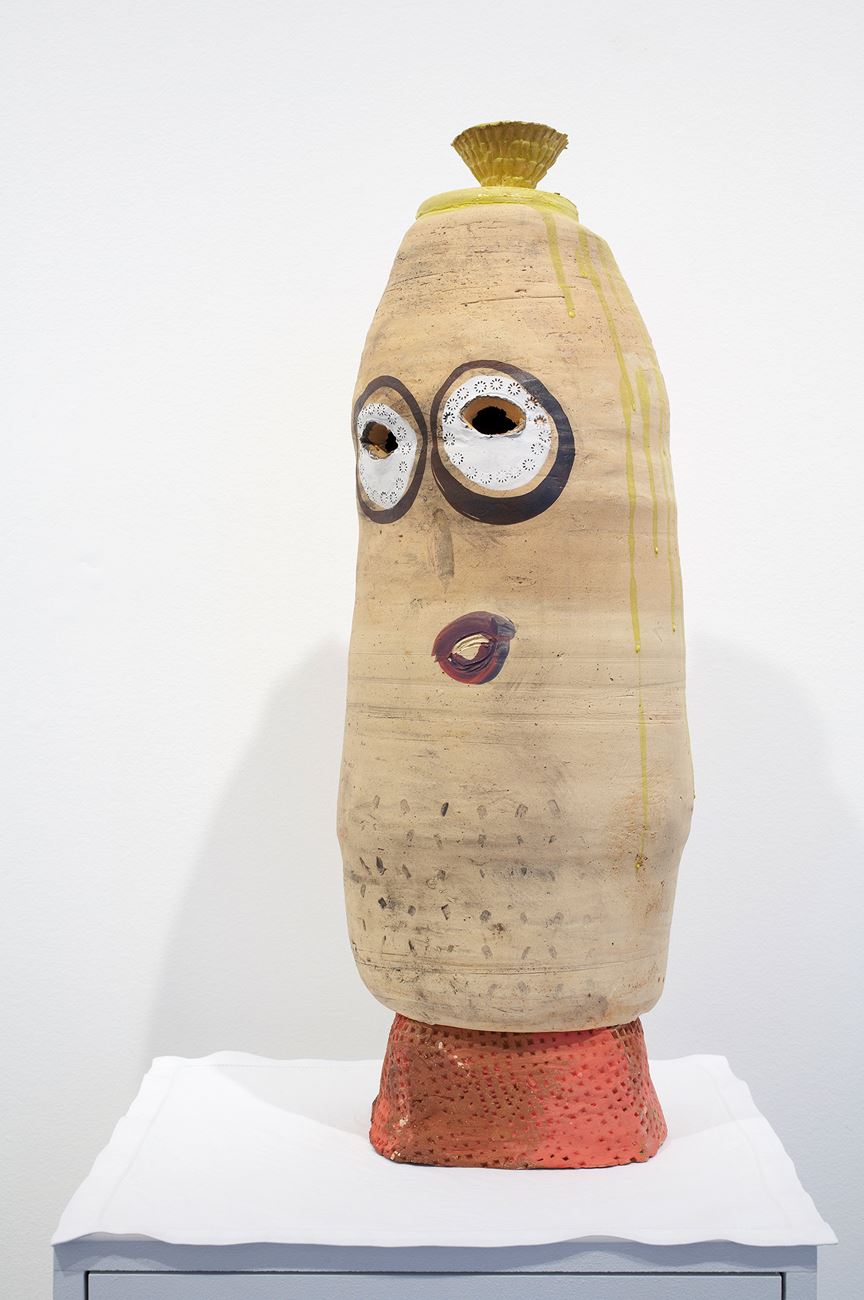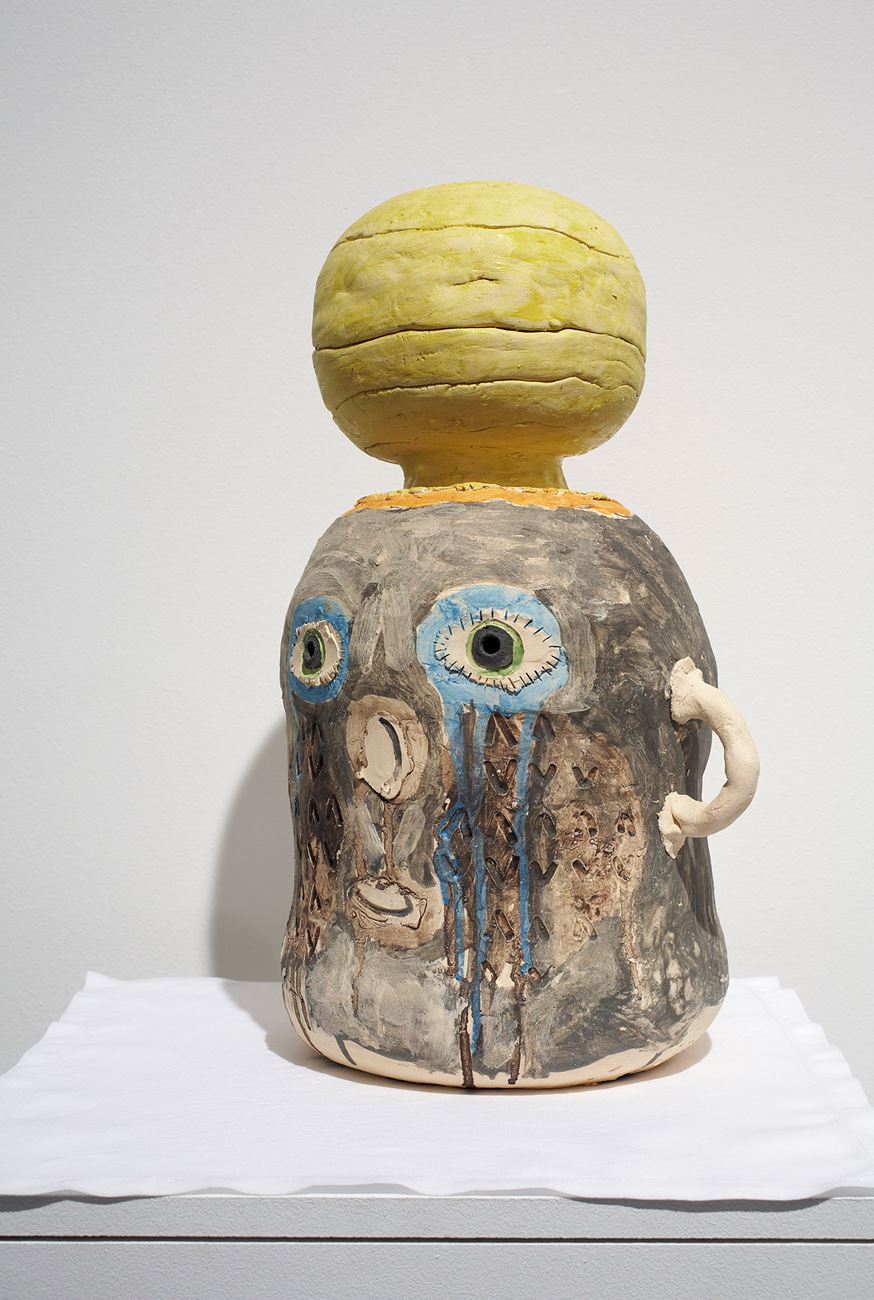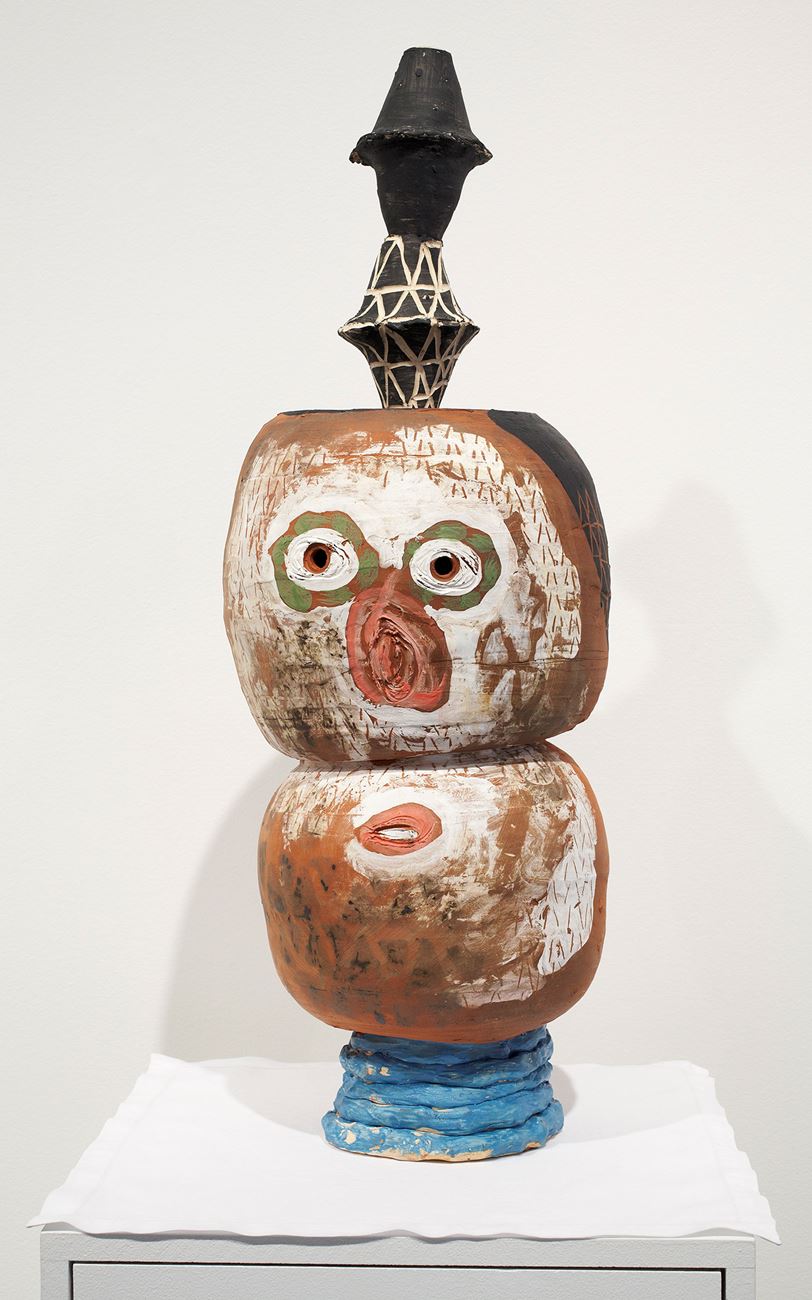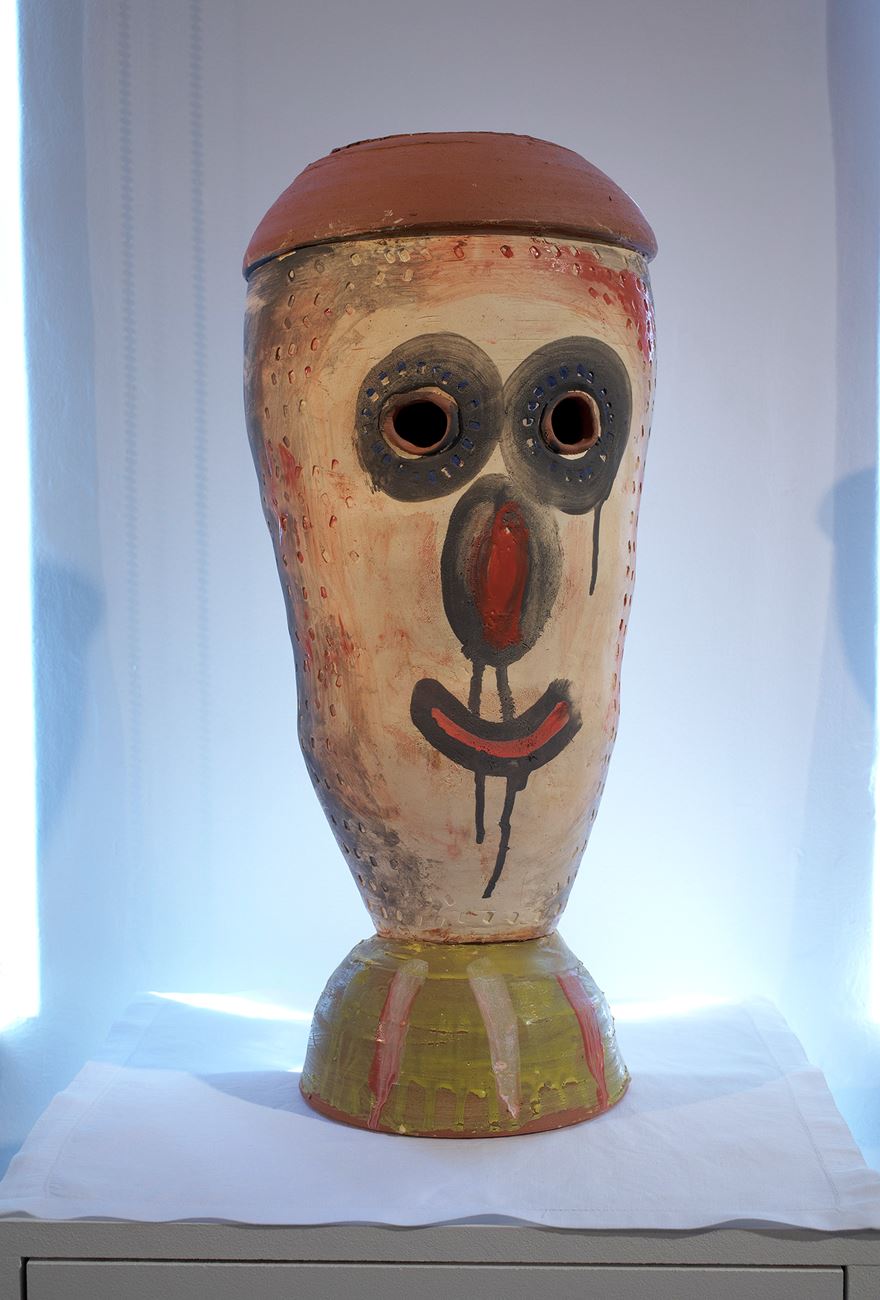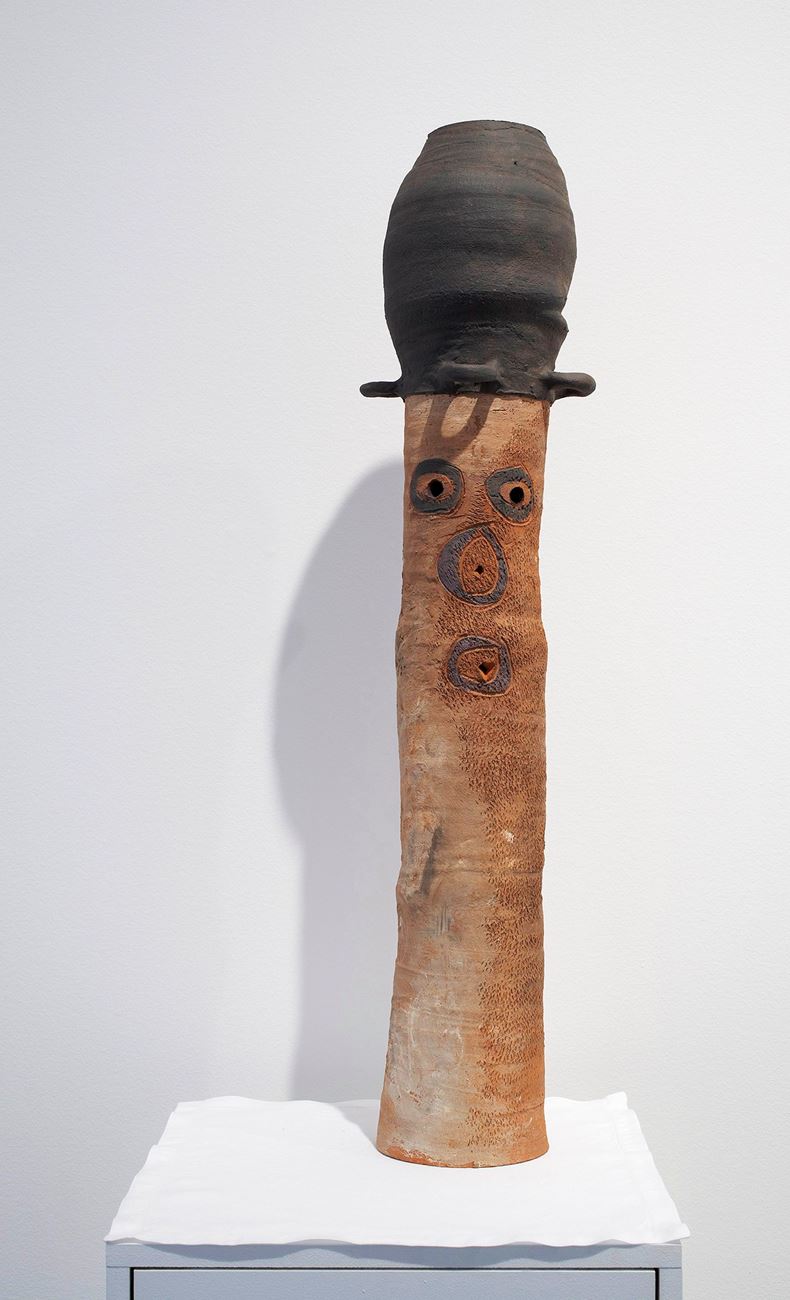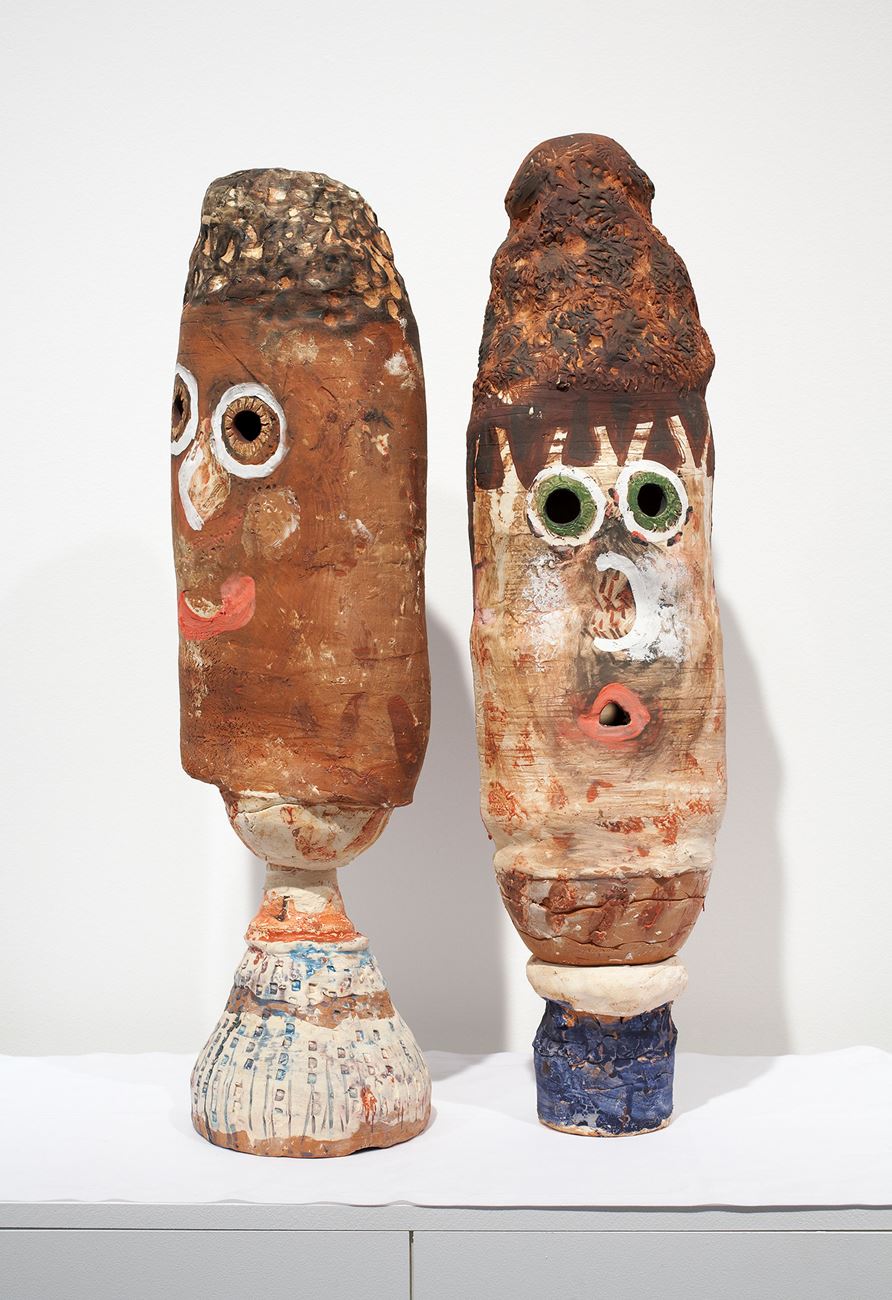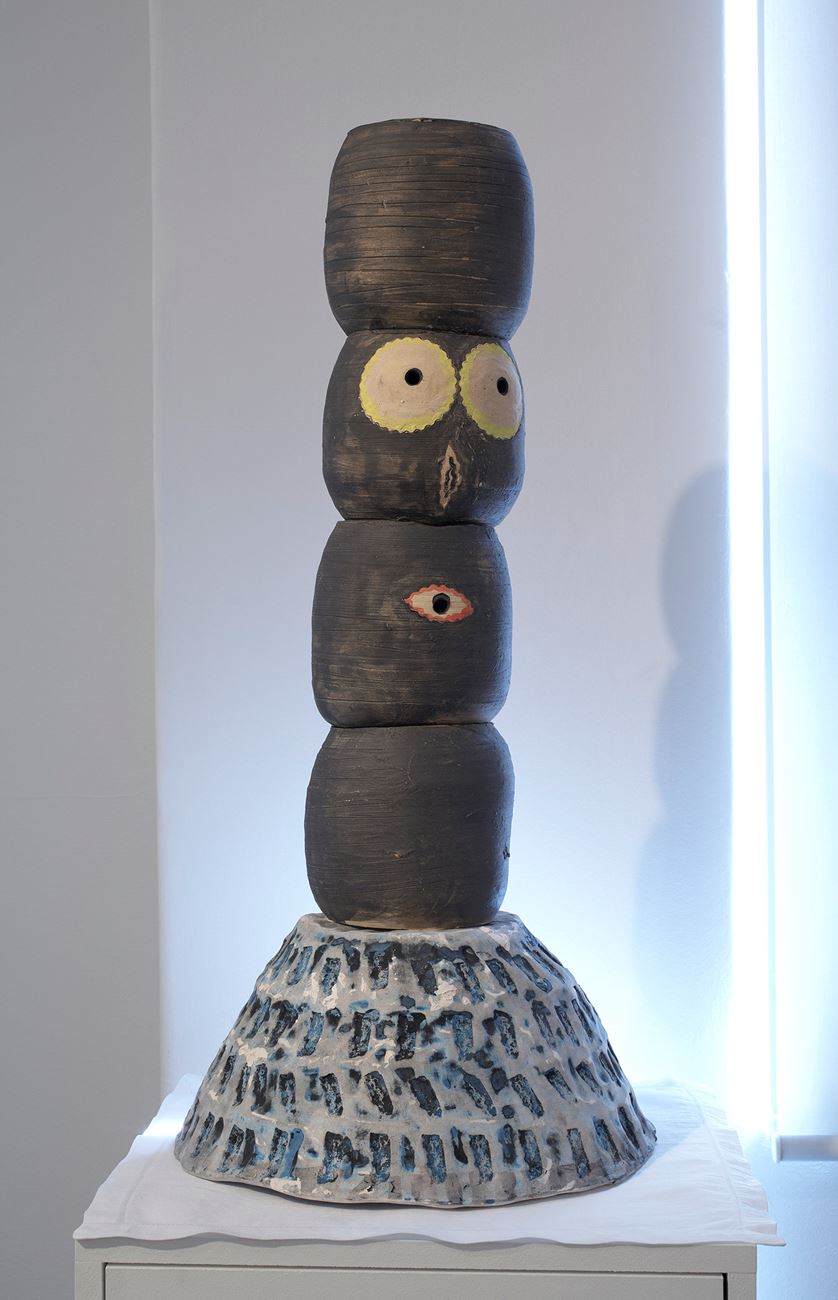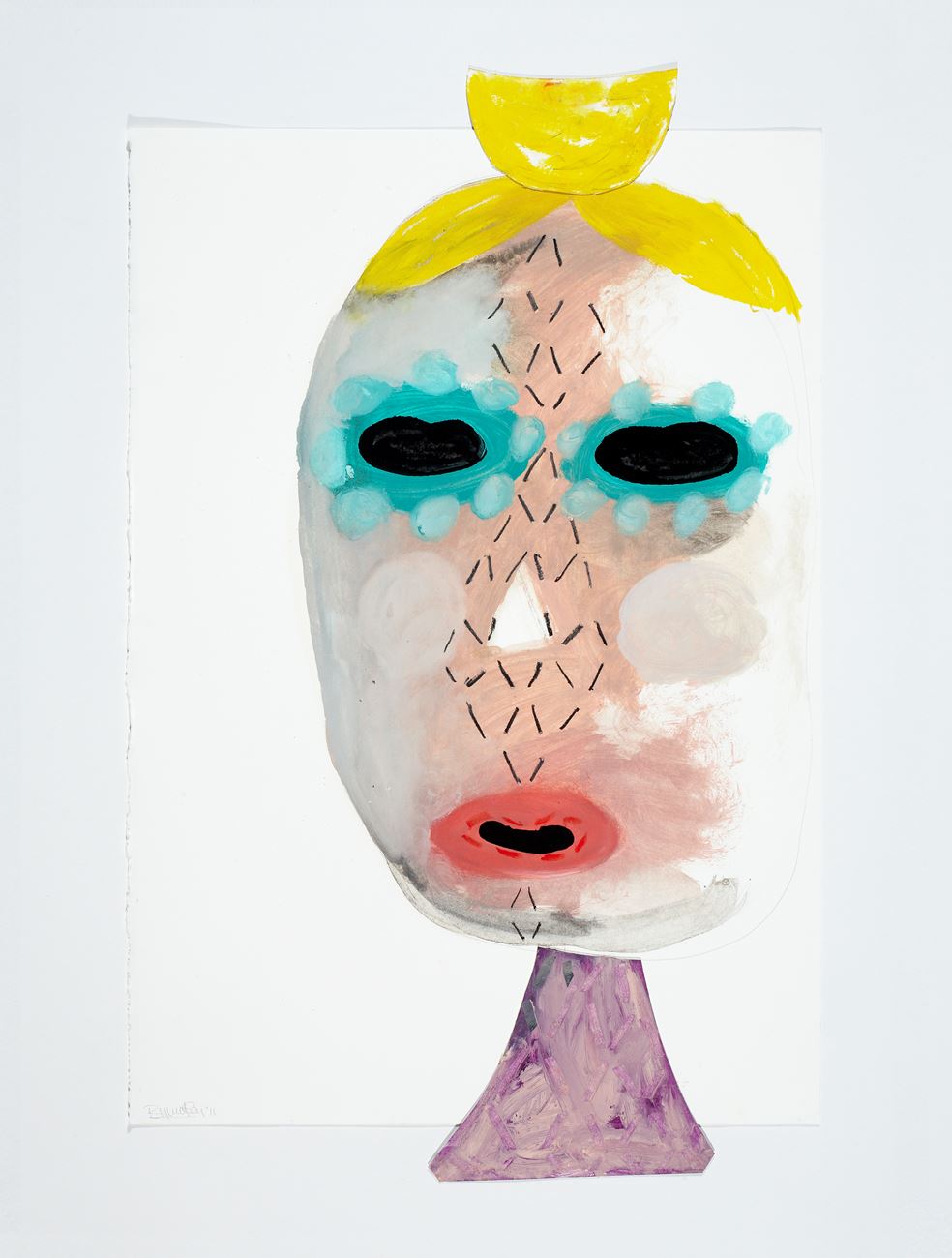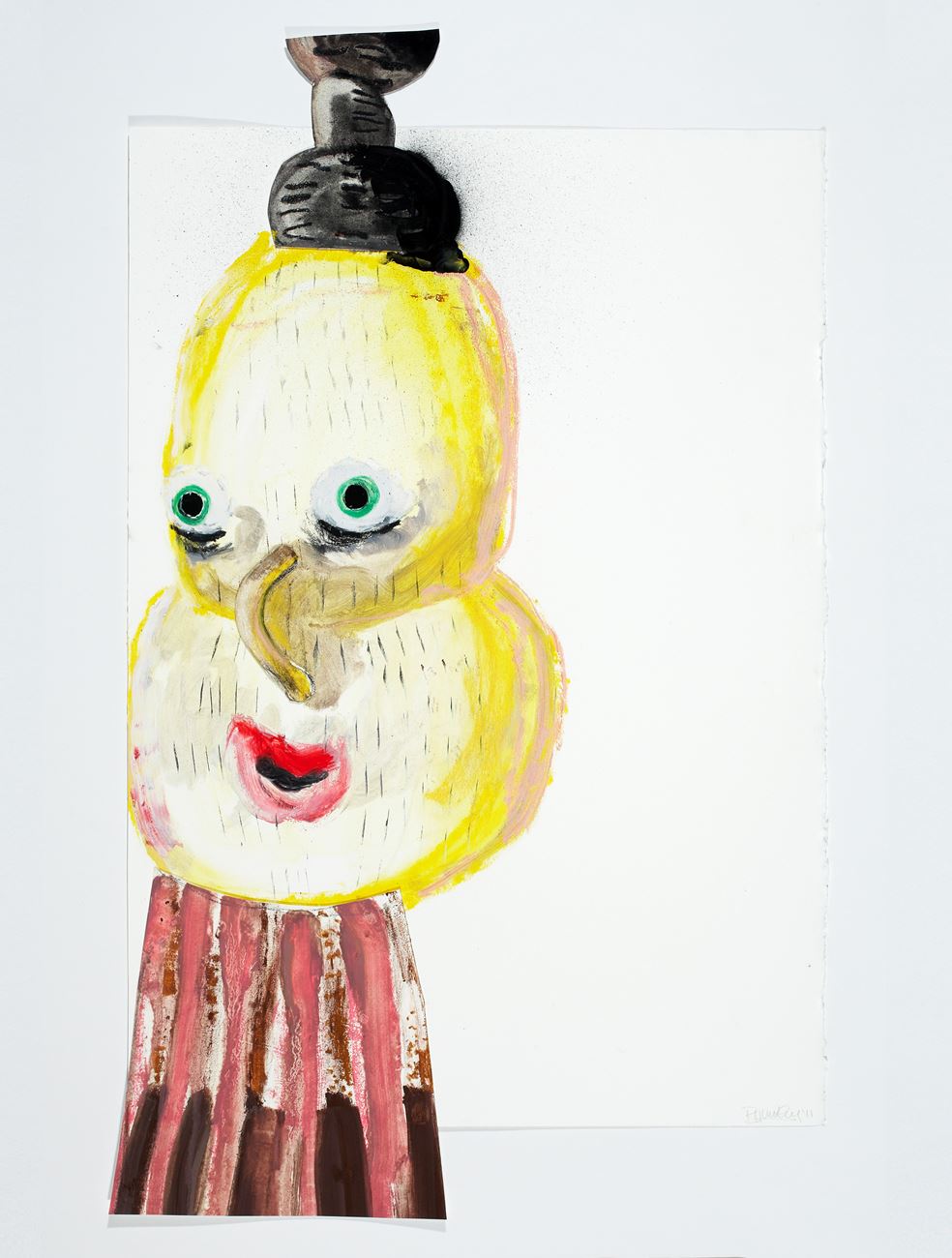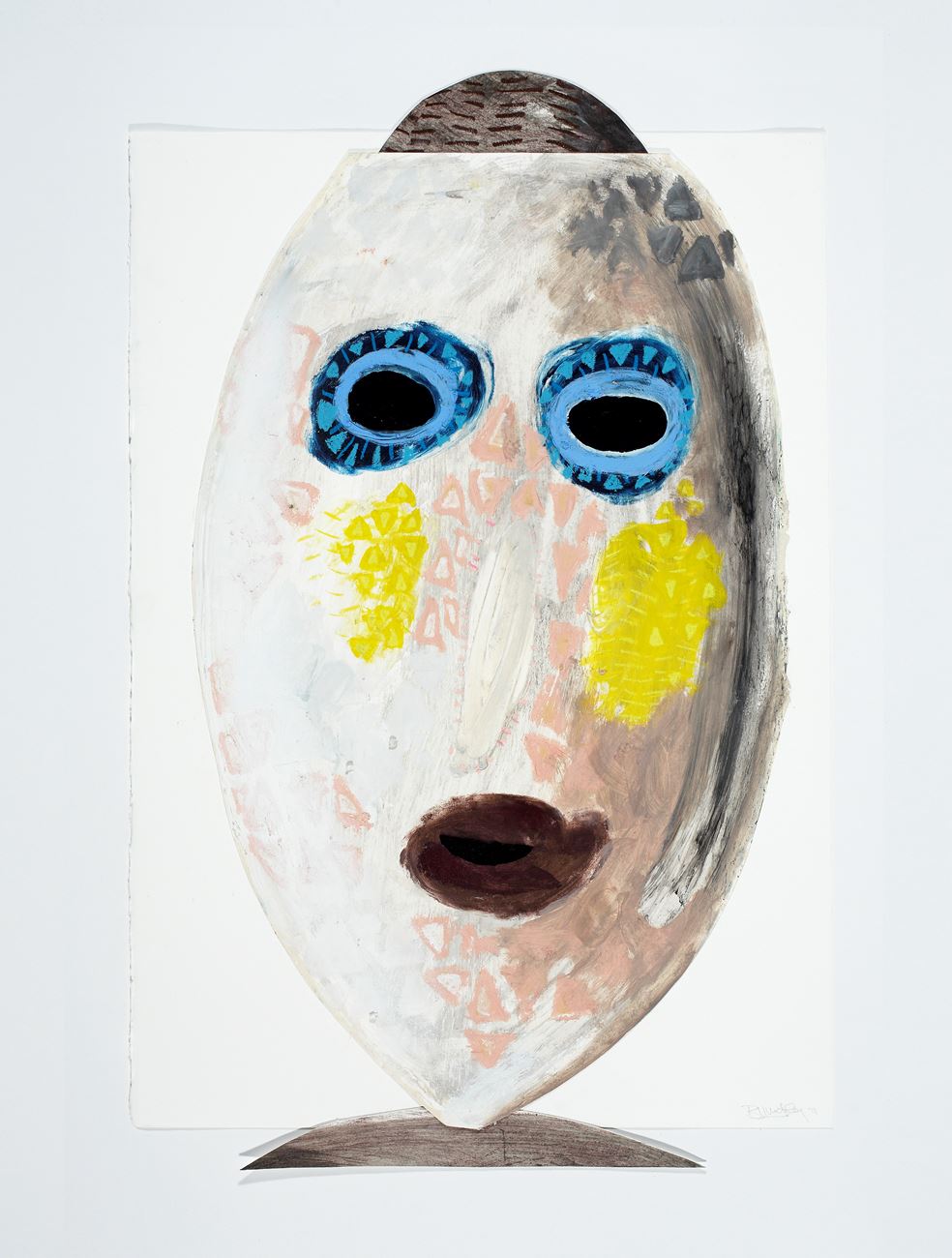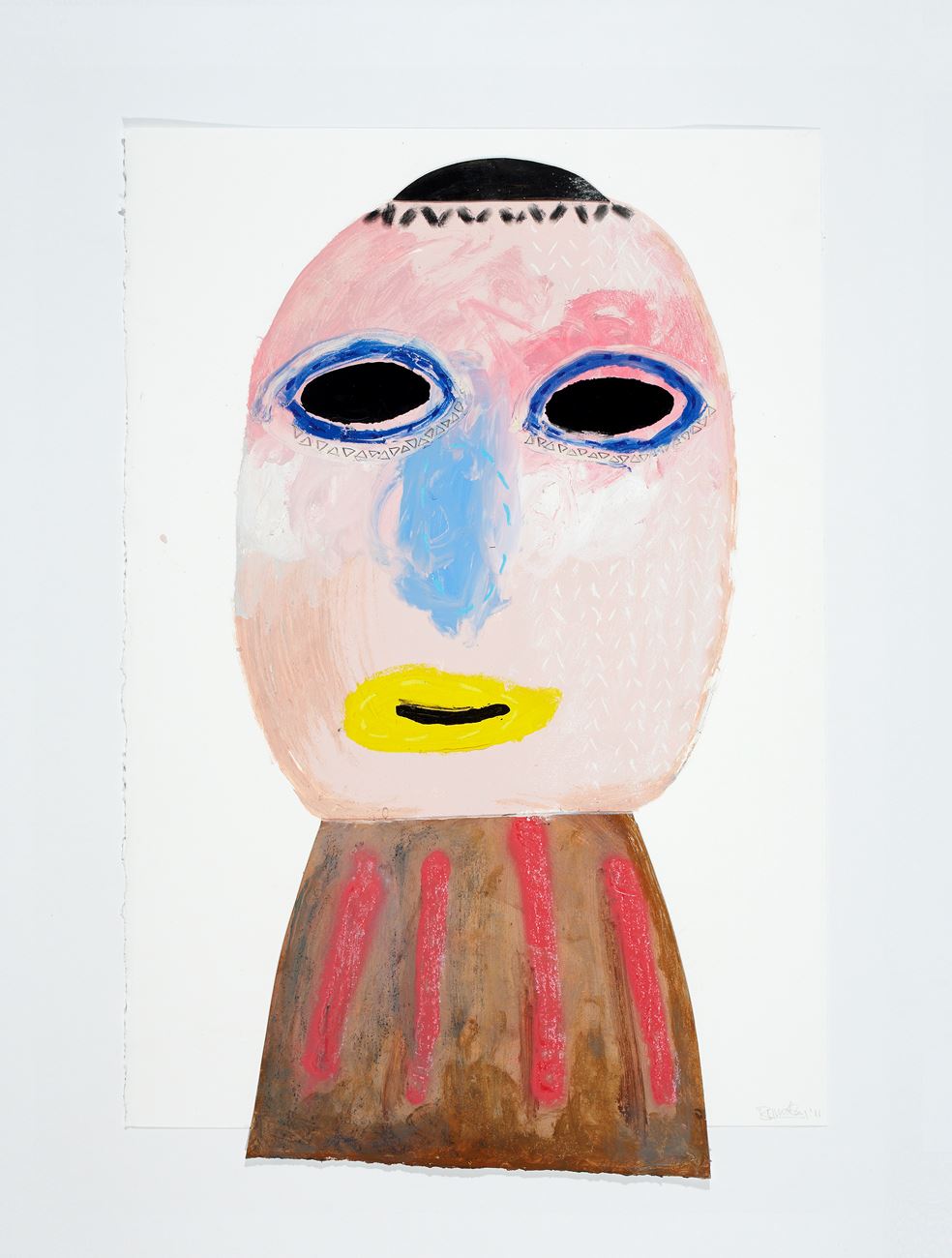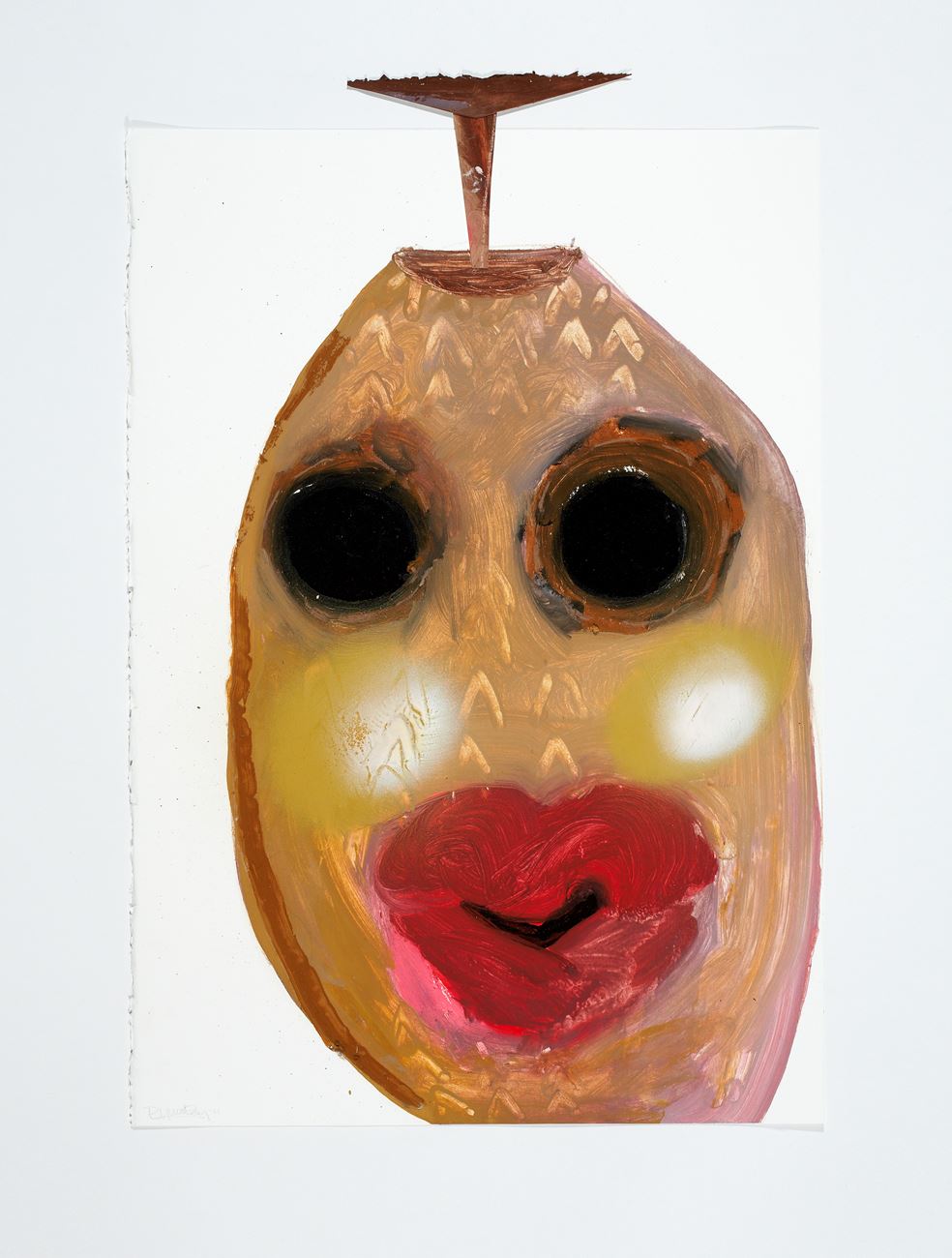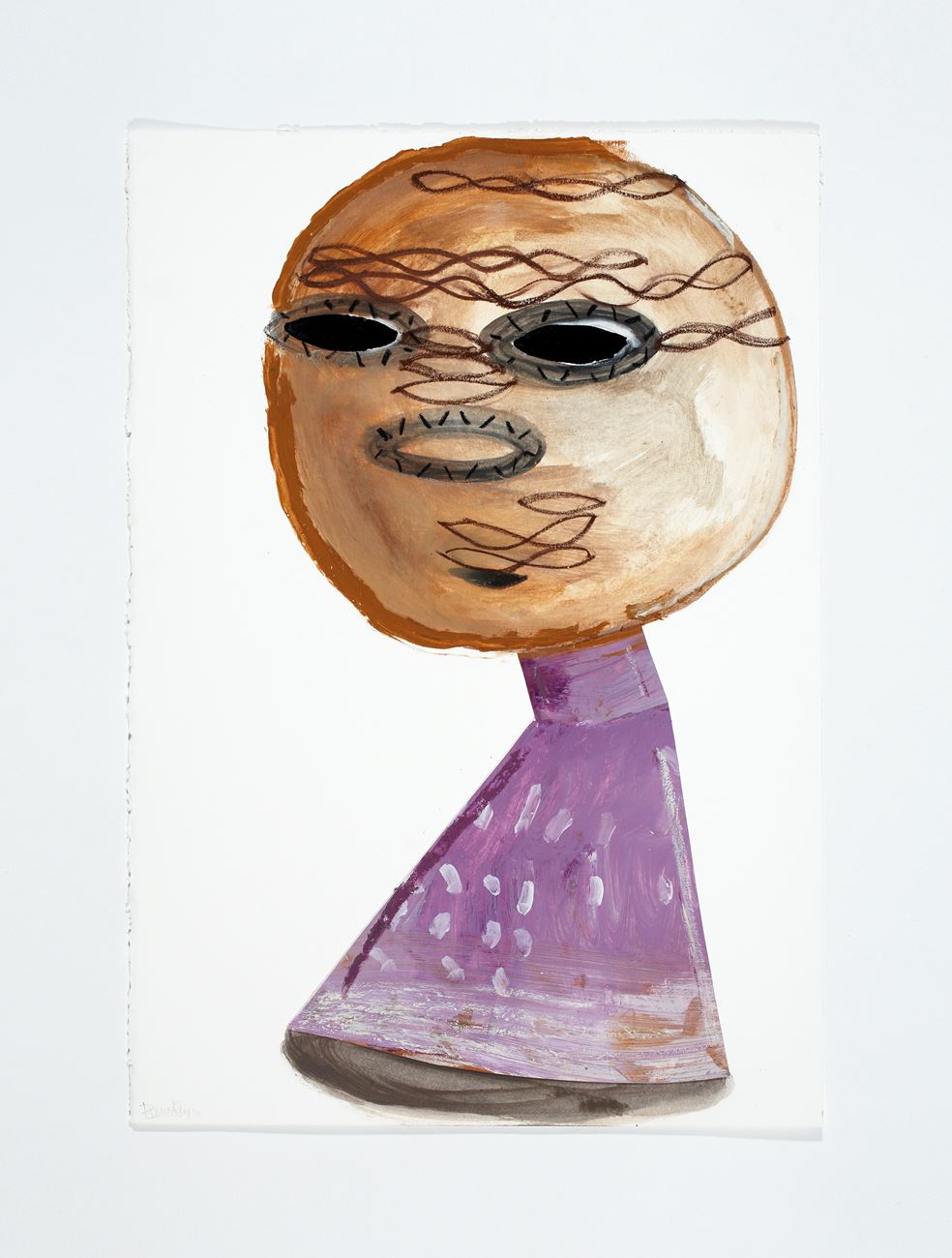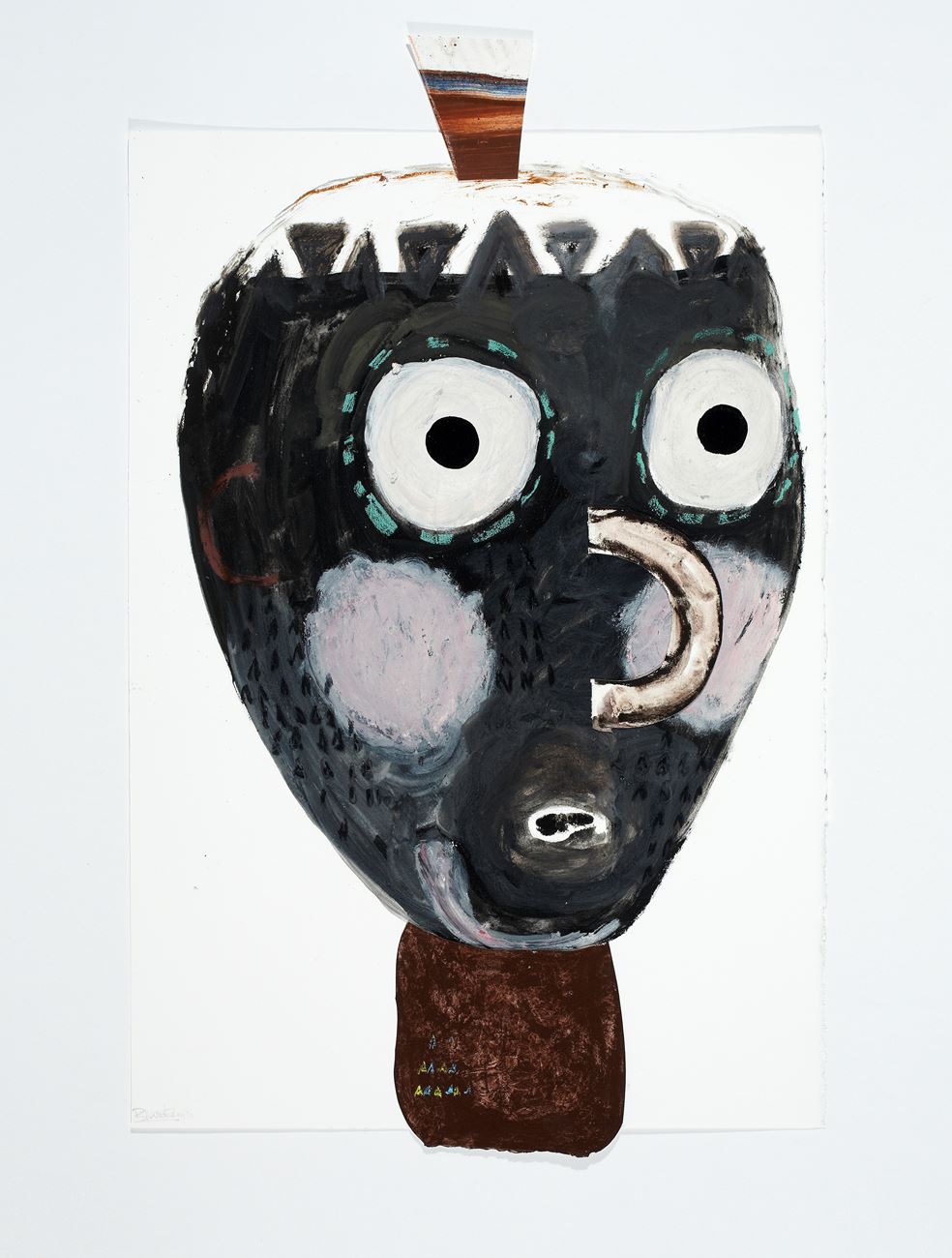Make Yourself at Home,
Tolarno Galleries, Melbourne
29 Oct – 19 Nov 2011
Brendan
Huntley: Make Yourself at Home, Tolarno Galleries, October 2011
Francis E Parker
There is great affection in the way Brendan Huntley speaks about his works; more than the attachment an artist normally feels for the objects he creates, Huntley sees his paintings and sculptures with moods, emotions and personalities. How many of Huntley’s collectors, I wonder, find themselves speaking to the works, offering them a greeting as they pass as if they embodied the household gods?
The works invite this kind of rapport because of their faces. They appeal to the human predisposition towards finding a visage in anything that might suggest two eyes and a mouth in much the same way that Leonardo da Vinci famously observed that a mark on the wall could produce a landscape in the mind’s eye.
To be looked at is to be validated, of course, and it seems not much less validating to be looked at by these inanimate objects than by a sentient being. The preference of the broadest audiences for figuration must lie to some extent with abstraction’s failure to return the gaze, to confirm the viewer’s presence before the work.
Huntley also draws on ordinary and everyday visual vocabulary, using the shapes of domestic vessels and patterns of particular fabrics; he works in the opposite direction, however, finding the unexpected in the familiar, which is to say there is an element of the uncanny in his work. Huntley puts life into inanimate objects.
Huntley works on the brink of automatic drawing, and places the origin of his works outside himself. He speaks of them as though they act upon him as much as he acts upon them, and is their medium as much as the clay, oil stick, enamels and pastel are his. Sometimes he coerces them into the forms that he wants at others times they take shape in their own way. Some works bear the trace of an initial but discarded position for the eyes, as though Huntley realised that it would not awaken the work correctly – as the saying goes, eyes are the windows to the soul. Whether, in placing them, he uncovers the souls in his objects and paintings or gently guides them into being, it is in these apertures that their life force seems to be contained. Before any appraisal of colour, form or texture can be made, you must let them look you in the eye.
Huntley himself feels safe with the works, even if he finds odd ones a challenge to be near. That is the nature of the company of others, of course.
While the same character might often appear as both a drawing and a sculpture, this is never in the conventional relationship of a sketch to a completed work; both modes of making have equal status and Huntley’s method is intuitive and improvisational rather than plotted out in advance. In the techniques he applies to them, the works on paper and sculptures reach out to meet each other, the collage elements and layering of enamel and oil stick of one resembling the hand-building and application of coloured slips and glazes of the other.
He faces the sculptures off against the works on paper on a level playing field, eye to eye across the gallery. The sculptures are shown on plinths the same height as the workbench on which they were made; the shorter ones tend to look up and the taller ones straight ahead, to fix their maker’s eyes in their gaze. The plinths Huntley builds have the appearance of draws and kitchen cabinetry; perhaps this makes the sculptures feel at home while they are away from the domestic environment, but this display method also proposes itself as a stage set on which his actors might play when there is no one to observe them. The kitchen is a social space, as compared to the contemplative ambience of the gallery, and Huntley’s works are social ones, enlivened by interaction with each other as well as with us.
Make Yourself at Home marks a significant point of development in Huntley’s work. While for several years he has derived the forms of his sculptures from domestic vessels, this new group of works includes ambitious composites of identifiable ‘found’ forms as well as more figurative shapes. He is a sculptor who uses ceramic techniques that transgresses the rules of classic pottery to attempt things, such as grafting terracotta and porcelain clays, which ought not to emerge successfully from the kiln. The works on paper have literally expanded since his previous exhibitions and now include collage that breaches the confines of the paper sheet. Huntley’s characters are taking on more of their own form, retaining their familiar origins but growing ever more imaginative.
Though Huntley deals in vessels made to hold food and drink, he transposes their function into representation. In two dimensions, like Magritte’s pipe, they declare their passage from real to represented objects through the addition of human-like traits; in three dimensions their former functionality echoes around their hollow forms, upturned, conjoined and with wide open eyes and mouths it has drained away. What Huntley makes are vessels that contain an aura; he conjures out of oil stick and clay artworks that have presence and individuality, that invite you into a relationship with them and hold a promise of companionship. As Huntley says, ‘They can bring you good vibes.’
Francis E Parker
There is great affection in the way Brendan Huntley speaks about his works; more than the attachment an artist normally feels for the objects he creates, Huntley sees his paintings and sculptures with moods, emotions and personalities. How many of Huntley’s collectors, I wonder, find themselves speaking to the works, offering them a greeting as they pass as if they embodied the household gods?
The works invite this kind of rapport because of their faces. They appeal to the human predisposition towards finding a visage in anything that might suggest two eyes and a mouth in much the same way that Leonardo da Vinci famously observed that a mark on the wall could produce a landscape in the mind’s eye.
To be looked at is to be validated, of course, and it seems not much less validating to be looked at by these inanimate objects than by a sentient being. The preference of the broadest audiences for figuration must lie to some extent with abstraction’s failure to return the gaze, to confirm the viewer’s presence before the work.
Huntley also draws on ordinary and everyday visual vocabulary, using the shapes of domestic vessels and patterns of particular fabrics; he works in the opposite direction, however, finding the unexpected in the familiar, which is to say there is an element of the uncanny in his work. Huntley puts life into inanimate objects.
Huntley works on the brink of automatic drawing, and places the origin of his works outside himself. He speaks of them as though they act upon him as much as he acts upon them, and is their medium as much as the clay, oil stick, enamels and pastel are his. Sometimes he coerces them into the forms that he wants at others times they take shape in their own way. Some works bear the trace of an initial but discarded position for the eyes, as though Huntley realised that it would not awaken the work correctly – as the saying goes, eyes are the windows to the soul. Whether, in placing them, he uncovers the souls in his objects and paintings or gently guides them into being, it is in these apertures that their life force seems to be contained. Before any appraisal of colour, form or texture can be made, you must let them look you in the eye.
Huntley himself feels safe with the works, even if he finds odd ones a challenge to be near. That is the nature of the company of others, of course.
While the same character might often appear as both a drawing and a sculpture, this is never in the conventional relationship of a sketch to a completed work; both modes of making have equal status and Huntley’s method is intuitive and improvisational rather than plotted out in advance. In the techniques he applies to them, the works on paper and sculptures reach out to meet each other, the collage elements and layering of enamel and oil stick of one resembling the hand-building and application of coloured slips and glazes of the other.
He faces the sculptures off against the works on paper on a level playing field, eye to eye across the gallery. The sculptures are shown on plinths the same height as the workbench on which they were made; the shorter ones tend to look up and the taller ones straight ahead, to fix their maker’s eyes in their gaze. The plinths Huntley builds have the appearance of draws and kitchen cabinetry; perhaps this makes the sculptures feel at home while they are away from the domestic environment, but this display method also proposes itself as a stage set on which his actors might play when there is no one to observe them. The kitchen is a social space, as compared to the contemplative ambience of the gallery, and Huntley’s works are social ones, enlivened by interaction with each other as well as with us.
Make Yourself at Home marks a significant point of development in Huntley’s work. While for several years he has derived the forms of his sculptures from domestic vessels, this new group of works includes ambitious composites of identifiable ‘found’ forms as well as more figurative shapes. He is a sculptor who uses ceramic techniques that transgresses the rules of classic pottery to attempt things, such as grafting terracotta and porcelain clays, which ought not to emerge successfully from the kiln. The works on paper have literally expanded since his previous exhibitions and now include collage that breaches the confines of the paper sheet. Huntley’s characters are taking on more of their own form, retaining their familiar origins but growing ever more imaginative.
Though Huntley deals in vessels made to hold food and drink, he transposes their function into representation. In two dimensions, like Magritte’s pipe, they declare their passage from real to represented objects through the addition of human-like traits; in three dimensions their former functionality echoes around their hollow forms, upturned, conjoined and with wide open eyes and mouths it has drained away. What Huntley makes are vessels that contain an aura; he conjures out of oil stick and clay artworks that have presence and individuality, that invite you into a relationship with them and hold a promise of companionship. As Huntley says, ‘They can bring you good vibes.’
© Brendan Huntley 2024

